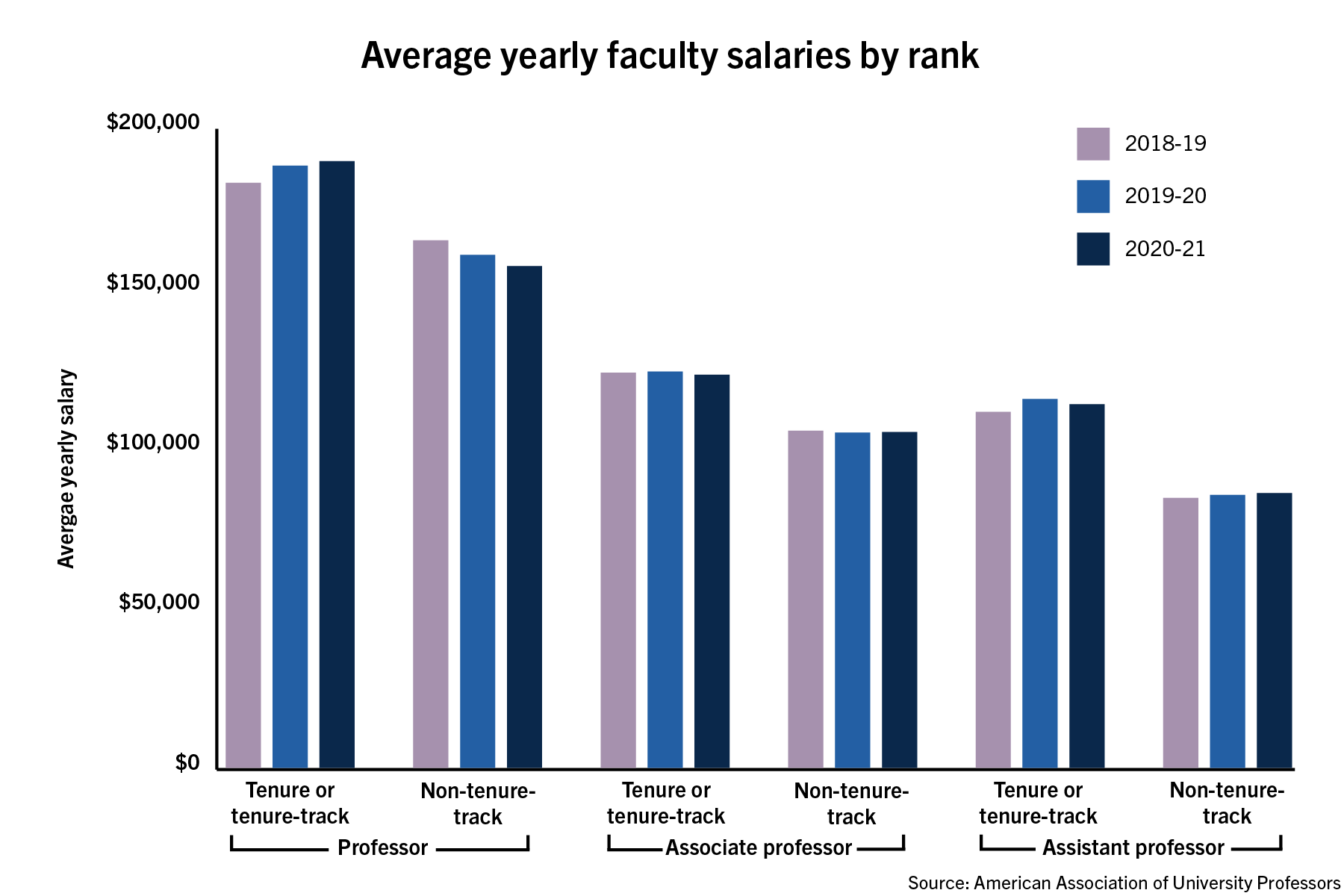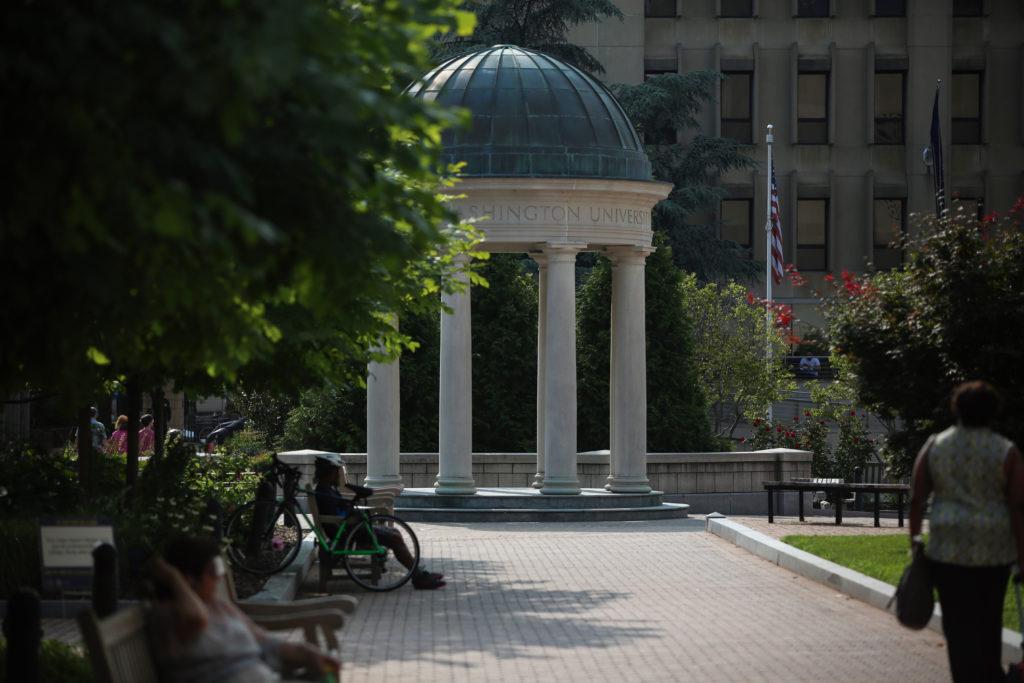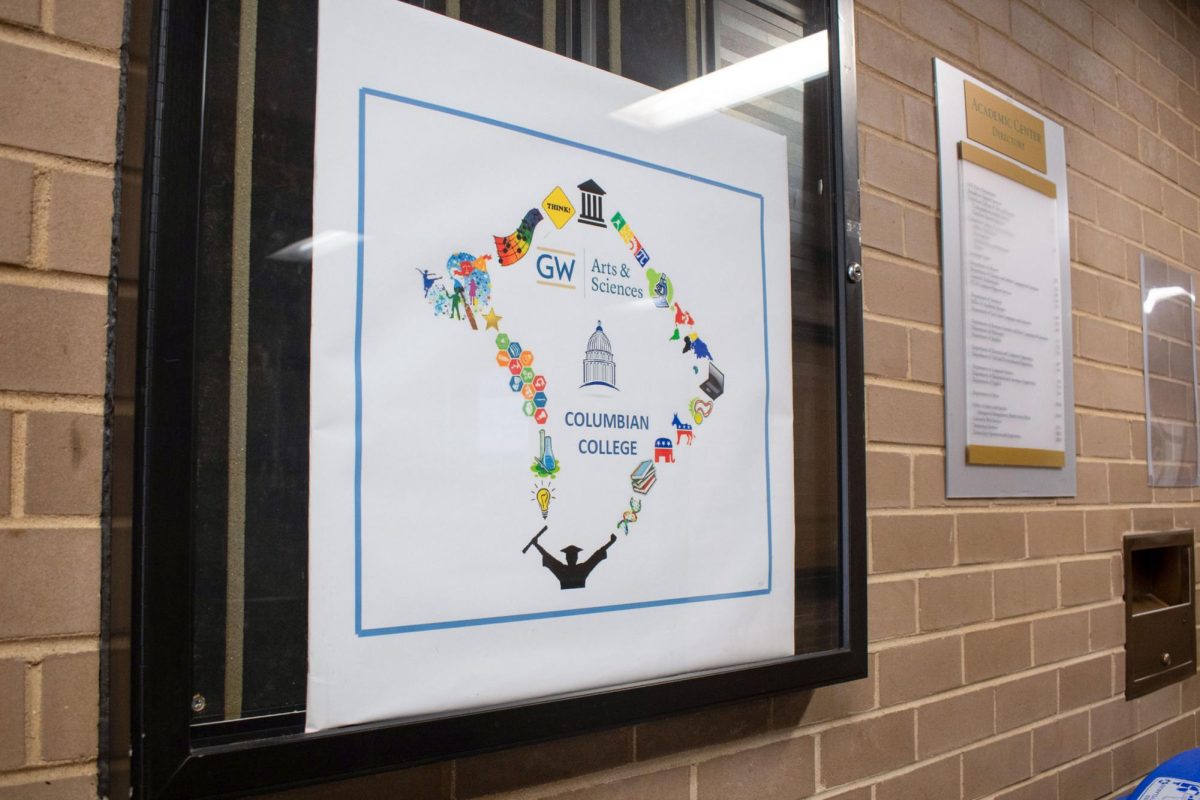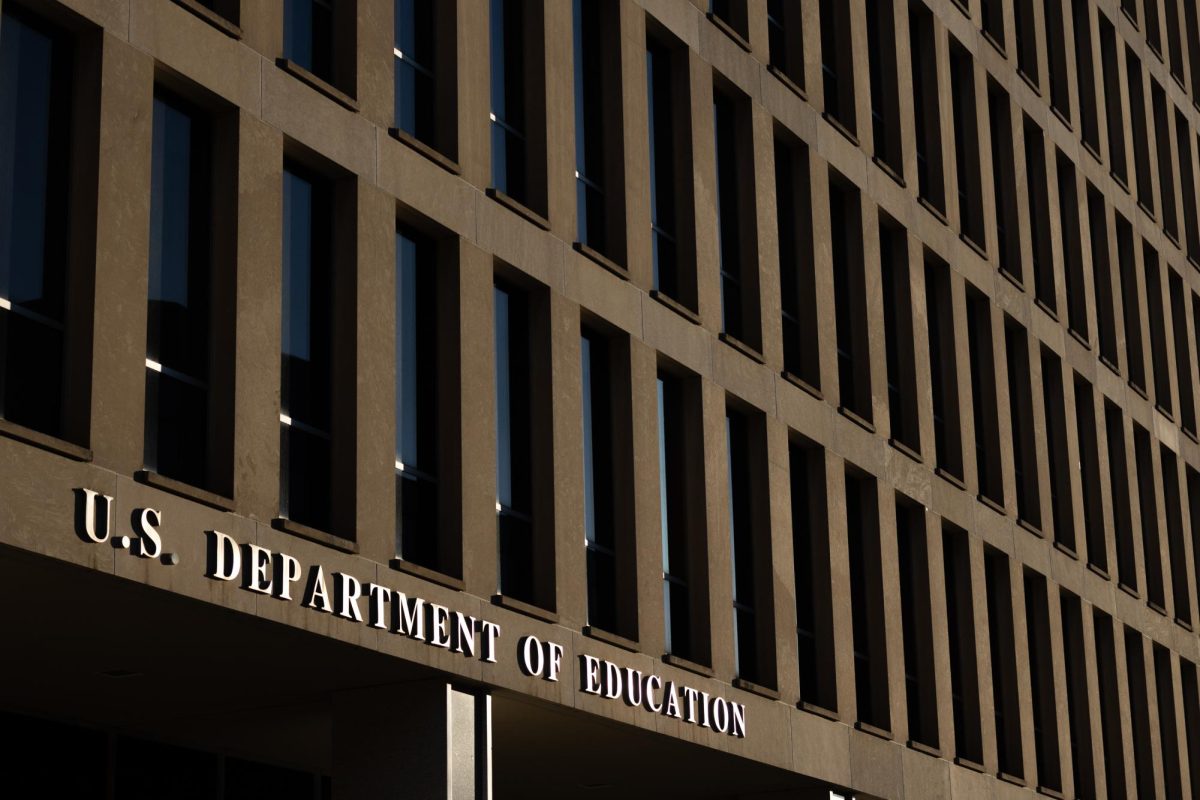Full-time, assistant and associate professors earned a lower average salary this academic year compared to the last, part of a nationwide fallback in faculty compensation during the COVID-19 pandemic.
The American Association of University Professors’ annual survey on faculty compensation, which reports on more than 900 U.S. universities, including GW, found that real wages for full-time faculty decreased for the first time since the Great Recession this past academic year. Officials’ data showed slight decreases in average salaries for all three levels of professorship with full professors decreasing by an average of $1,023, associate professors by $381 and assistant professors by $478 this year.
The GW data is broken down between tenured and non-tenured professors across three professorships — full, associate and assistant — for the past five years. Chris Bracey, the vice provost for faculty affairs, and Cheryl Beil, the associate provost for academic planning and assessment, said the University’s budget mitigation response to the pandemic impacted the entire University community, including faculty.
“Faculty (and staff) did not receive salary increases during last year’s merit cycle,” they said in an email. “It is expected that the Board of Trustees will approve a full merit pool for this year’s merit cycle, and that faculty (and staff) will be eligible for salary increases that will take effect July 1.”
Officials’ data revealed that average salaries for full, assistant and associate professors have been on the rise in the years leading up to the pandemic, with most increases spanning from 2016 through the 2019-2020 academic year. Average salaries for associate professors decreased by less than $100 in the 2019-2020 academic year, while all other professorships continued to receive salary increases before the pandemic’s outbreak.
For tenured or tenure-track faculty, full professors earned on average $1,431 more than last year, while associate and assistant professors, respectively, earned $950 and $1,596 less on average, according to officials’ data. For non-tenure-track faculty, full professors made $3,478 less than last year while associate and assistant professors earned $188 and $640 more, respectively.

Nicholas Anastacio | Graphics Editor
AAUP’s data for full-time faculty real wages, which adjust for inflation, reported the first decrease since the 2011-2012 school year, with real wages for full-time faculty dropping at 68 percent of institutions surveyed.
The survey results indicate that 62 percent of institutions saw reductions in the number of full-time faculty this year with 26 percent of schools losing more than 5 percent of their professors. The total number of full-time faculty members among surveyed schools decreased by 0.3 percent overall.
GW data on the total number of full-time faculty increased minimally in the four years before the pandemic, from 993 members in the 2016-2017 academic year to 1,021 members in the 2019-2020 academic year. Officials declined to supply the data for the 2020-21 academic year.
The AAUP survey also measured the nationwide response from higher education institutions to the COVID-19 pandemic, finding that more than 60 percent of schools implemented salary freezes or reductions, while more than 30 percent eliminated or reduced some form of fringe benefits. More than 20 percent terminated or didn’t renew contracts for some non-tenured faculty, and almost 10 percent of schools furloughed at least some faculty members.
Officials implemented a hiring freeze last March and suspended all salary increases last April to mitigate the financial impacts of the pandemic that created an estimated $180 million gap in the University budget this fiscal year. Officials also laid off a total of 339 staff members in divisions like communications and academic advising last year.
Experts in economics said the COVID-19 pandemic was the determining factor in the faculty wage decreases in higher education institutions this year, but they’re unsure about its long-term effects. They said the pandemic’s long-term impact on faculty salaries, the speed of economic recovery and university reopening timelines remain unknown.
Ben Hansen, a professor of economics and the director of graduate studies at the University of Oregon, said faculty wage decreases were driven by university cost-cutting measures instituted at the onset of the pandemic, like temporary salary furloughs and salary freezes. He said this past year may have resulted in the weakest academic market ever, with listings for full-time positions down as much as 70 to 80 percent during the pandemic’s peak, which meant the lack of outside offers from other universities to professors also likely contributed to wage decreases overall.
Hansen said enrollment figures and students’ willingness to return to campuses this upcoming academic year will determine whether or not faculty real wages reported by AAUP will continue to drop in the near future.
“My own expectation is that, at least with many universities, we’re going to see perhaps record enrollments,” he said. “But it depends partly on what students want and partly on the availability families have to pay for college.”
Yujung Hwang, an assistant professor of economics at Johns Hopkins University, said her school canceled retirement contributions for faculty members this past year like at many other institutions, but she added that her university is returning to a “normal payment scheme” for professors next year. She said she is unaware of how wage cuts could affect faculty in higher education differently than the pandemic as a whole.
“It will be difficult to disentangle the effect of wage cuts from the effect of the pandemic (e.g. increased childcare burden, fear of infection and etc.),” she said in an email.
Officials froze all employee salaries last April and retirement contributions last October but reinstated GW employees’ base retirement contributions and promotion-related salary increases in January. Officials also announced this March that they are resuming matching retirement contributions and merit salary increases for faculty starting this July.
Joyce Chen, an assistant professor of economics at The Ohio State University, said most universities she is familiar with have implemented some sort of budget restrictions and skipped annual increases for faculty this past school year because of the pandemic. She said these restrictions and wage reductions could exacerbate existing pay disparities for female and minority faculty.
Recent GW data on minority and non-minority professors revealed that full professors of color made less on average than non-minority full professors, while minority associate and assistant professors made more.
She said female and underrepresented faculty have been “harder hit” by the pandemic with increased caregiving responsibilities and health risks. She said this has been a “lost year in productivity,” which is likely to worsen pay gaps for minority and female professors as any promotions and the prospect of gaining tenure status are delayed.
“So they wait longer for a pay raise, and then they’re sort of forever behind the eight ball and never catch up,” she said. “That’s something universities need to contend with now.”








